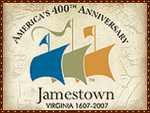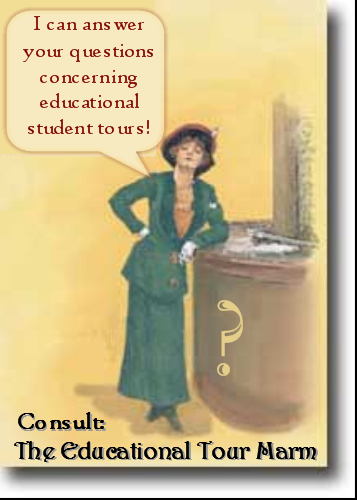Journeys versus Guided Tours!
Educational Travel Programs Should be Journeys,
Not Guided Tours!
Too often I hear the word 'tour' or 'trip' when teachers call to organize an educational travel program and that's the problem; School travel programs are being approached as sightseeing tours and I'm constantly asked to put in all the usual tour stuff. Most teachers never ask about educational content!
Ok, it's rather easy in Washington, DC, Philadelphia, New York, and Boston to put in all sorts of 'educational' sights and shuttle the students hither and fro, but what are they actually learning or experiencing? Of course they'll have fun, take lots of photos, and have a, 'been, there, seen that, done it, and I bought the tee shirt' attitude, rather than retain the significance of the sites, the memory of some hands-on experience. or an inspiriational story. Most of these students can't remember enough about the sites to label their photos properly!
There are so many marvelous places, hands-on discoveries, and educational opportunities available to challenge and engage students. Most tour operators and travel agencies are not aware of these opportunites or simply refuse to include them in the 'package'! It therefore becomes the organizer's responsibility to be knowledgeable enough to request that these sites and hands-on opportunities be added to the program.
I approach my teachers with one very important question: What do you want to accomplish with this educational travel program? Is it a reflection of your teaching plan and curriculum, or is it simply an end-of-term trip?
If it is indeed an educational journey, we discuss alignment to curriculum and/or state standards as well as inclusion of some personal preferences and wish lists. In addition, I also ask which concepts have been difficult for the students to grasp and how this ETP could be of service to illustrate them. In addition, is this ETP to be cross-curricular?
During these discussions, I offer several alternative sites, venues, and educational opportunities that can serve their purposes and illuminate their respective curricula. Some of them are quite surprising and many of my groups are not spending time in the traditional venues! Instead of a generic sightseeing excursion, a custom-designed program responsive to the needs of the teacher is developed.
However, we musn't lose sight of the 'fun' factor.
A well-run and designed ETP containing hands-on discoveries and first person experiences makes history and science come alive. Students who are engaged and challenged are happy. Students who are given fun tasks during the ETP requiring teambuilding are happy and less likely to make the 'wrong choices' during the program.
The argument against alternative venues, sights, and programs I hear most often from organizers is that the students might never have the chance to return and so we must get in as much as possible. My answer: Less is more. Quality is better than quantity. If the ETP is inspiring and there are programs and experiences offered that can not be accessed by the general public, the students will get more out of it and will eventually want to return. And at that point, they can do all the usual tour stuff!
What's your opinion?
The Tour Marm
















No comments:
Post a Comment